Grunwald, Kircholm, Kłuszyn… great victories. It is a pity that they are labeled as wasted in the Polish consciousness. We believe that the Poles who fought back then were brave and brave, but also a bit sluggish, unable to put a stop to i. Are we rightly offending our ancestors?
The Battle of Grunwald, or a safe border with Hungary
Poland in 1409 faced a war with the most militarized country in the world - the Teutonic Order . On July 15, 1410, she achieved a great victory at Grunwald. If the textbooks or the media were to be believed, it would be a pity for the West at all.
To this day, we pride ourselves on the victory over the Teutonic Knights. But you have to face the truth. This victory did not bring much to Poland - you can read on the website of the Polish Radio. Dzieje.pl, the website of the Polish History Museum, goes even further in the assessment of the Grunwald battle:
Although it was loud all over Europe, the failure to take advantage of the victory of 1410 turned out to be tragic for the Polish state in the next few centuries .
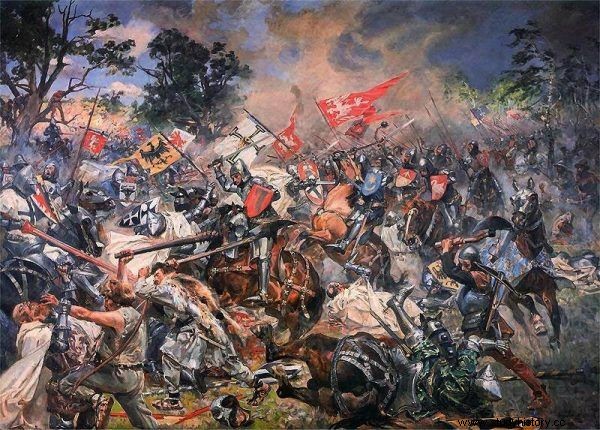
Was the victory over the Teutonic Knights really not used? The Battle of Grunwald in the painting by Wojciech Kossak (source:public domain).
Let's clear up a few facts. Poland regained the Dobrzyń Land, the Teutonic Order had to pay huge amounts of money, the war ended with peace. In addition, we achieved a huge propaganda success .
In the Treaty of Toruń of 1411, which ended the war, the knights-nuns officially admitted that pagans still lived in the areas under their control. The great fighters for Christianization, who wanted to instruct Poland and Lithuania in the field of missionary activities, had a brothel in their Archeo themselves.
While earlier knights from all over Western Europe came to fight on the side of the Teutonic Knights, the influx of "guests" ended after Grunwald. Was it realized that the whole struggle for the Christianization of Lithuania and the surrounding area was a big lie, or were they afraid to stand up against the Poles - never mind.
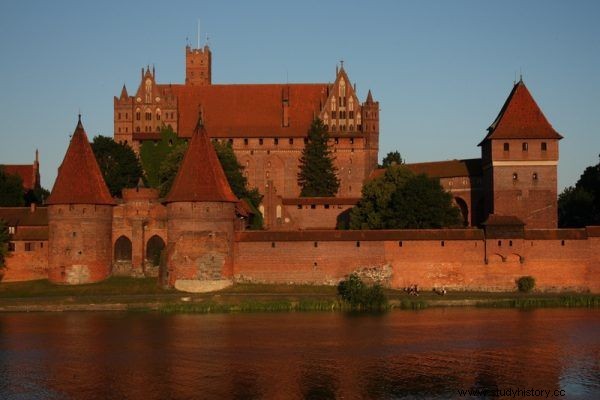
Historians accuse Jagiello of not setting off for Malbork immediately after the Grunwald victory. But was it even possible to conquer this fortress then? (author:Ludwig Schneider, license:CC BY-SA 3.0)
Usually, it is accused Władysław Jagiełło that immediately after the Battle of Grunwald he did not move on and did not take Malbork from the march. The king lost a few precious days and the Teutonic Knights in the meantime were able to organize an effective defense.
First, it is not known whether there was an army in Europe at that time capable of conquering such a fortress through a regular siege. Secondly, a few days before the Battle of Grunwald it turned out that Poland was in danger of fighting on two fronts . The war was declared by Sigismund of Luxemburg, King of Hungary.
Fortunately, it only ended with a plundering invasion, and the few Polish knights remaining in southern Lesser Poland, in pursuit of the attackers, stormed into Hungary and near Bardiowo (now in Slovakia), despite the advantage of the enemy, fought a victorious battle.
Soon after, the gate was bolted, through which the "nephews" could attack us again. In the Carpathian chain that separated the two countries, such a role was played by the borderland Spisz. In 1412, after complicated negotiations, King Sigismund of Luxemburg took over part of the Teutonic financial obligations, and in return he pledged to Poland (in practice:for eternal non-return) part of Spisz with the castle in Lubowla.
In other words, with the money obtained at Grunwald we bought a strategic part of today's Slovakia. Since then, for over three centuries, we have not been in direct danger from Hungary, regardless of the attitude of its rulers.
The Battle of Kircholm, or the relief of Riga
September 27, 1605. The army of the Republic of Poland then numbered 3,500 soldiers, while the Swedes numbered 12,000. When Hetman Jan Karol Chodkiewicz mentioned numerous enemy banners in his speech before the battle, he was interrupted by one of his armored companions, saying: We will count them better when we kill the Swedes .

Despite the enormous numerical advantage, the Swedes lost at Kircholm. The result - 9,000 killed. Hetman Chodkiewicz lost only 100 soldiers. The painting "After the Battle of Kircholm" by Jan Suchodolski (source:public domain).
A total victory despite the enemy's numerical advantage almost four times (or maybe five times - according to different estimates). Chodkiewicz had 100 killed, 200 wounded and many lost horses on his side. 9,000 soldiers were killed on the Swedish side. The corpses of the enemies converged on the ten kilometer stretch from Kircholm to Riga .
Exactly, Riga.
Kircholm is practically always talked about in terms of an unused victory. And if the battle was called Riga's relief - as it was - the perspective would change immediately. In the year of our Lord 1605, today's Latvian capital was the second city of the Republic. The victory over the Swedes brought about a measurable effect - Riga was saved.
The following years were marked by a bloody cat and mouse game with the Swedes . Chodkiewicz had another great victories and, as usual, had a problem with getting the soldiers' pay. The Swedes regained the poorly manned strongholds from time to time, but success was near. A few years after Kircholma, the hetman conducted secret negotiations with the authorities of Rewel, today's Tallinn, and had already agreed with them the conditions for their transition to the rule of the Polish-Lithuanian Commonwealth!

The victory at Kircholm had a very tangible effect - saving Riga. Pieter Snayers painting "The Battle of Kircholm" (source:public domain).
The problem was that this one had a new direction of expansion - Moscow. There is nothing to hide, devastated by an internal crisis, Russia was for Poles like a promotion in a supermarket and it gave more possibilities than northern Estonia, because it was the only one that separated the Polish state from the Gulf of Finland.
We lost Riga itself in more than unlucky circumstances. When in 1621 the Polish army resisted the great Turkish army, the Swedes stuck a knife in our back and attacked us from the north. This is what the solidarity of the Christian world looks like in the face of the Islamic threat! The Ryzhians defended themselves bravely, but when they had no hope of helping - they had to surrender.
Kluszyn, or the open road to Moscow
4 July 1610, Kłuszyn. Moth innumerable that it was scary to see them in relation to the number of our little army! One of the hussars recalled a moment before the battle. Hetman Stanisław Żółkiewski had to face an opponent more numerous, according to some calculations, even seven times!
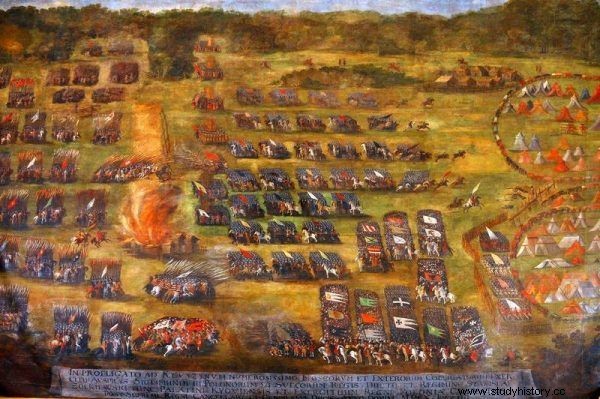
Winning in hopeless situations is a Polish specialty! There were even seven times more Russians at Kluszyn, and the Poles still triumphed. The painting "The Battle of Kłuszyn" by Szymon Boguszowicz (source:public domain).
The Russians, backed by Swedish mercenaries, should have won. Necessitas in loco, spes in virtuti, salus in victoria! Shouted Żółkiewski in classical Latin, quoting Tacitus. Literally explaining, Need in place, hope in bravery, rescue in victory! . And found salvation in victory .
It is worth realizing that a defeat at Kluszyn would practically mean the defeat of the Republic of Poland in the entire war with Russia . The main Polish forces were near Smolensk, which at that time was one of the most powerful fortresses in the world. The siege lasted for months, and Prince Dymitr Szujski, brother of Tsar Vasyl IV, came to the rescue. If he did, the Polish army caught up in two fires would have a big problem ...
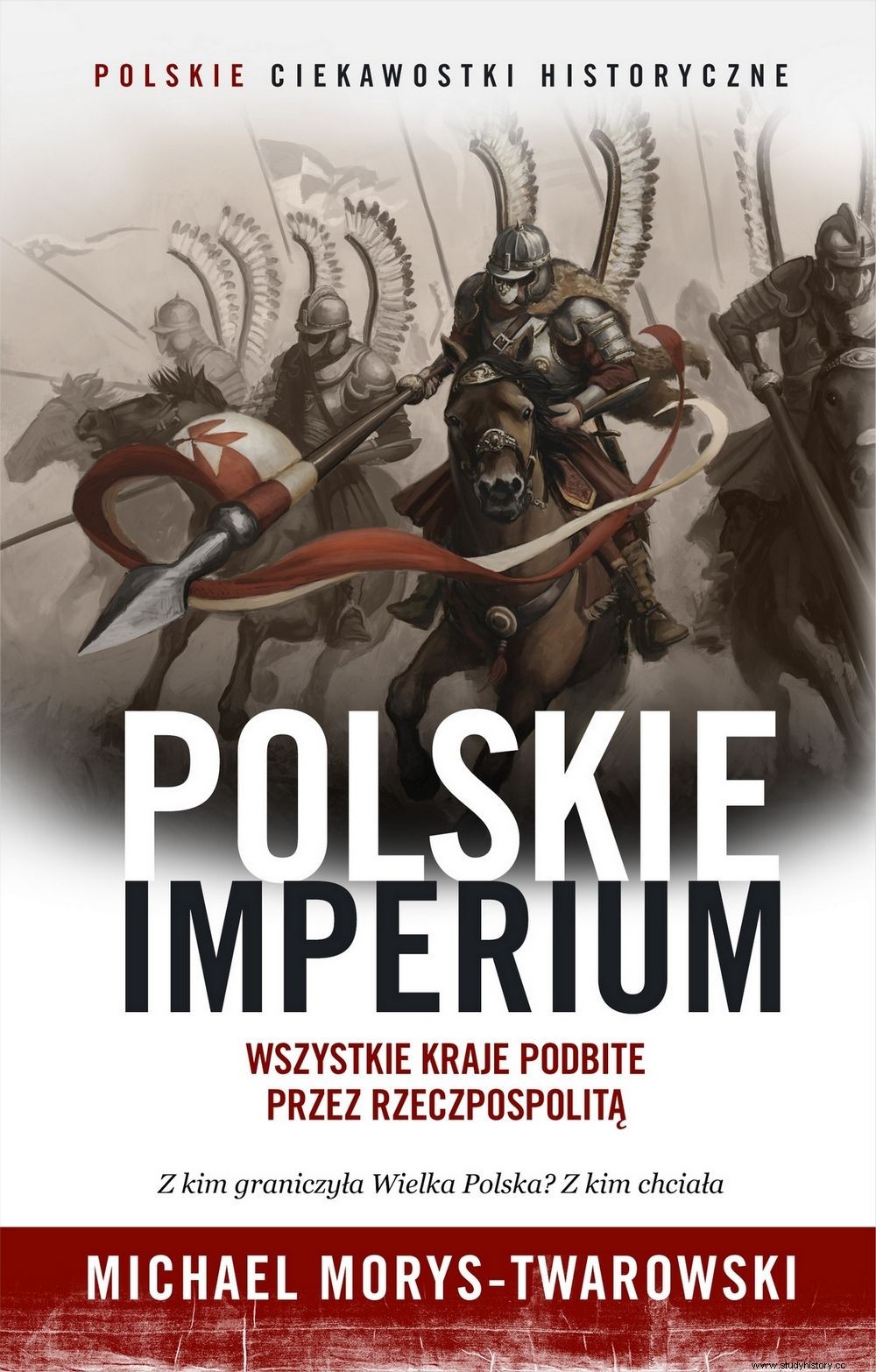
Fortunately, Hetman Żółkiewski, sent from Smolensk at the head of a small force, crashed the Russian army. Its commander, prince Szujski, even lost his shoes during the escape . And since the appetite grows with eating - the queen followed the blow and entered Moscow.
Before the war, the minimum plan of the Republic of Poland assumed the recovery of lands formerly belonging to the Grand Duchy of Lithuania, and seized at the beginning of the 16th century by Moscow. The maximum plan was to subjugate Russia by placing the Polish prince Władysław on the throne of the tsars.
In the end, it was not possible to achieve the maximum plan, but the balance of several years of fights turned out to be a plus. After the end of hostilities in 1618, the Commonwealth increased its ownership, while reaching the largest area in its history. It would not have been possible without the Kruushin victory.
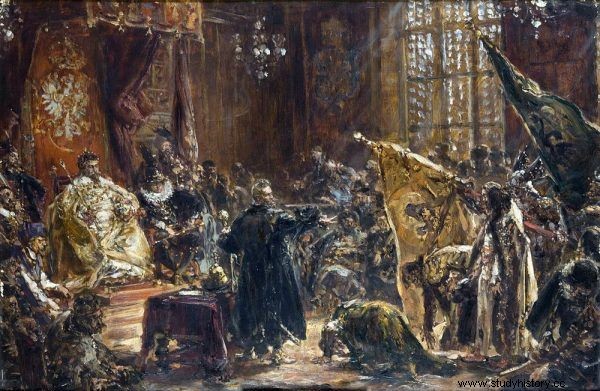
While fleeing the Polish army, Prince Szujski even lost his shoes! However, it did not help him much, because in the end he was taken prisoner by Poland and in 1611 he had to pay tribute to Sigismund III Vasa with his brother Tsar Vasyl IV Szujski. The illustration shows a painting by Jan Matejko showing this event (source:public domain).
No exaggeration with self-flagellation
Historians locked in university offices are extremely greedy. We won at Grunwald - let's destroy the most militarized country in the world! Did you come to the relief of Riga? - we are pushing the borders to the Gulf of Finland! We stopped the Russian rescue on the way to Smolensk and even entered Moscow - not much, we had to take over Russia!
With such high expectations, the history of mankind turns out to be mainly a story of unused victories. Sure, you could squeeze more out of Grunwald, Kircholm and Kłuszyn. However, let's not exaggerate by saying that they did not bring any tangible results .
***
Michael Morys-Twarowski proves that we should not focus on the vision of our history full of failures and failures. Texts about a disastrous geopolitical situation and dangerous neighbors should finally be put aside. In the pages of the Polish Empire, the author boldly and eloquently describes the times when the Republic of Poland really was a superpower. It's high time to admit it.
Studies
- Balcerek Mariusz, Siege of Riga in 1621 , "Studies and Materials for Military History", vol. 14, 2008, pp. 14-39.
- Błaszczyk Grzegorz, The history of Polish-Lithuanian relations , vol. 2, Poznań 2007.
- Kurtyka Janusz, The beginnings of the Spiš starosty and the first starosts. From the history of Władysław Jagiełło's policy towards the Teutonic Order and Sigismund of Luxemburg in the years 1411-1430 , "Studies in the History of the State and Polish Law", vol. 9, issue 1, 2006, pp. 153-179.
- Majewski Andrzej Adam, Moscow 1617-1618 , Warsaw 2006.
- Manteuffel Gustaw, Outlines from the history of the Livonian lands, that is Livonia proper (both Swedish and Polish), Estonia with Ozylia, Courland and Piltyna Land , ed. Krzysztof Zajas, Krakow 2007.
- Naruszewicz Adam, Żywot J.K. Chodkiewicz , vol. 1-2, ed. Kazimierz Józef Turowski, Przemyśl 1857, Krakow 1858.
- Podhorodecki Leszek, Famous Hetmen of the Republic of Poland , Warsaw 1994.
- Pole Wojciech, For the Kremlin and the Smolensk region. The policy of the Republic of Poland towards Moscow in the years 1607–1612 , Toruń 2014.
- Szcześniak Robert, Kłuszyn 1610 , Warsaw 2004.
- Zajas Krzysztof, Absent culture. The case of Polish Livonia , Krakow 2008.
